| DAY 01 ARRIVE DELHI |
Arrive at New Delhi’s Indira Gandhi International airport.
Delhi – the capital of India – The city consists of two parts – Old & New Delhi. Old Delhi was the capital of Muslim India between 17th and 19th century and has many mosques, monuments and forts. New Delhi, the imperial city was created by the British as the capital of India. In 1911, Edwin Lutyens, the most renowned English architect of the day, was chosen to design New Delhi which flaunts a surprising number of impressive monuments related to its conquests by the Mughals, Turks, Persians and ultimately the British.
Meet & Assist: Our representative meets you at the arrival hall of airport, holding a signage and escort you to your hotel in air-conditioned vehicle.
Check-in at hotel and stay for 2 nights.
Overnight at Hotel
| DAY 02 DELHI |
Post breakfast visit Old Delhi which was the capital of Muslim India between 17th and 19th century and has many mosques, monuments and forts. Begin your day with an exploration of Old Delhi – visit the Jama Masjid, the royal mosque built by the Mughal Emperor, Shah Jahan in 1656. It is one of the largest and most beautiful mosques in the world and is constructed in red sandstone and white marble. The main prayer hall has a seating capacity of more than 20,000 worshippers. In the old city of Delhi, walk through the by-lanes of the spice market, the wedding street and the jeweler’s lane to savor the 350 years old culture up-close. There will be great photo opportunities here.
Enjoy a cycle rickshaw ride through the narrow lanes of Chandni Chowk, the spine of Old Delhi. Jahanara Begum, the daughter of Shah Jahan designed this commercial place in 1648. Drive past Red fort, built in red sand stone by Shah Jahan in 1648, this magnificent monument is laid out along the river Yamuna as an irregular octagon. Drive through the majestic boulevards of New Delhi designed by the Edwin Lutyens in 1920. Lutyens’ Delhi includes the grand government buildings and parliament house.
The Rashtrapati Bhavan (Presidential Palace) is where the Viceroy once lived and now is the official residence of the President of India. It is an imposing structure with 340 rooms, constructed high up on Raisina Hill. View India Gate, a war memorial arch built in honour of 90,000 Indian soldiers who lost their lives in World War.
Continue to Humayun’s Tomb, the first great example of Mughal architecture in India, it developed to become the hallmark of the Mughal Dynasty. Culminate your tour at Qutab Minar, a soaring tower of victory, 72.5meter high with five distinct stories. The construction of this minaret commenced in 1193 and was completed in 1368. Built on the foundation of a Hindu temple, many elements of the construction reflect their Hindu and Jain origins. Within the complex, there are myriad monuments that combine both Islamic calligraphy and Hindu motifs.
Return to hotel after the above visits.
Overnight at Hotel
| DAY 03 DELHI – AGRA |
Breakfast at hotel
Later drive to Agra through covering a distance of 200kms in approx. 4 hours.
Agra: Two great Mughal monarchs, Akbar and Shah Jahan, transformed the little village of Agra into a befitting second capital of the Mughal Empire. Today, a visitor to Agra is caught up in a world of contrasting edifices of red sandstone and white marble, narrow lanes and quaint buggies, and that irresistible charm that this favorite city of the Mughals still retains.
Arrive at Agra and check-in at your hotel for overnight stay.
Later visit the famous Agra Fort followed by sunset visit to Mehtab Bagh.
Situated two kilometres towards west of the Taj Mahal on the banks of the river Yamuna. It was built by the third Mughal Emperor, Akbar, and added to by his son Jahangir and grandson Shahjahan. Agra Fort is an imposing structure with walls of red sandstone, almost two miles long and contains palaces, audience halls and mosques built by all the three emperors. The fort presents a good sampling of Islamic and Hindu architectural styles.
Mehtab Bagh proves to be one of the best sites to view the Taj Mahal. Inscriptions on the Mehtab Bagh site reveal that it is one of the four adjoining gardens that are known as Chahar Bagh Padshahi. It is known for providing one of the best locations to view the Taj Mahal. This garden is full of beautiful plants full of diverse flowers and fruits. These plants impart an amazing beauty to the garden. The place is full of fragrances providing the soothing experience to the visitors. The garden is amazingly beautiful when visited during full moon nights. The water tank in the garden reflects the moonlight falling on it filling the entire garden with a silver glaze.
Overnight at Hotel
| DAY 04 AGRA – RAMATHRA |
Morning sunrise visit to Taj Mahal.
Taj Mahal – The 17th century Taj Mahal is often called a poem in stone. If so, the mausoleum is a love poem – created by Mughal Emperor Shah Jahan for his favorite wife Mumtaz Mahal. It took 22 years to be completed and was designed and planned by a Persian architect Ustad Isa. Apart from its stunning design balance and perfect symmetry, the Taj is also noted for its elegant domes, intricately carved screens and some of the best inlay work ever seen. (Taj Mahal remains closed on Fridays)
Return back to the hotel for breakfast.
Later drive to Ramathra covering a distance of 220kms in approx. 5-6 hours.
En-route visit Fatehpur Sikri.
Fatehpur Sikri, the deserted red sandstone city was built by Emperor Akbar as his capital and Palace in the late 16th century. It is a veritable fairy tale city and its ruins are in pristine condition. It is not hard to imagine what the court life must have been like in the former days of its grandeur. Also visit the Bulund Darwaza, which is the largest gateway in the world.
Ramathra was granted as a jagir (fiefdom) in 1645 AD to Thakur Bhoj Pal by his father the Maharaja of Karauli. The name Ramathra honours Lord Rama, who, it is believed, camped here while on his epic journey to Lanka. Today, Ramathra Fort belongs to Thakur Brijendra Raj Pal and his family who are descendents of the founder. A complete walking tour of the Ramathra village, a small hamlet of farmers and herders, takes about 3 hours.
Arrive at Ramathra and check-in at your hotel for 2 nights.
Overnight at Hotel
| DAY 05 RAMATHRA |
Enjoy your morning while you could indulge in Nature walk in the lap of nature in the surroundings.
Breakfast at hotel.
The fort has a strong perimeter wall crowned with parapets. Its ramparts are wide and offer a spectacular view from the hilltop. Inside there is a multi-story palace, parts of which are being restored using traditional building techniques and local craftspeople. Stone lattices and a painted ceiling ornament the otherwise simple facilities. It was, after all, designed to be a battle fort. Ramathra Fort has a commanding view of the countryside. One can sit on the top of the fort’s massive outer wall and look out over farmland, rugged scrub of the Daang plateau, Kalisil Lake and its irrigation canal.
Later, proceed for a Guided Tour to the surrounding village which gives you a chance to interact with the local community to know more about the lifestyle along with the visit to the temples. The visit to the old age temples gives you an insight of the Indian history.
Return back to the fort for lunch.
Late afternoon proceed for a Bird watching tour which is the lifetime ticket to the theater of nature. Venturing out to look for and listen to various species of birds can be both enriching and relaxing. All you need is a pair of binoculars, a field guide, and a willingness to observe. Enjoy boating in the nearby lake exploring the beauty of the surroundings around the magnificent Ramathra hill-top fort.
Return back to fort after above visits.
Overnight at Hotel
| DAY 06 RAMATHRA – JAIPUR |
Breakfast at hotel.
Later drive to Jaipur covering a distance of 170kms in approx. 3-4 hours which is most preferred & bewitching city for Rajasthan tour packages
Jaipur: The city was first intended to be called ‘Sawai Jaipur’, named after the boy Prince who commissioned it – Maharaja Jai Singh II – a warrior, astronomer and politician who reigned over the Mughals from 1699 to 1743. Today’s Jaipur is pink, visually described as the city shaded with the autumn colors of sunset. Although originally the walls were render set and pigmented the color of red sandstone, Jaipur’s universal coat of pink only came in 1876 to coincide with the visit of the Prince of Wales (King Edward VII). Almost the entire city was given a coat of pink paint, thus giving it the name the ‘Pink City’.
Arrive in Jaipur and check-in at your hotel, where you stay for 02 nights.
Overnight at Hotel
| DAY 07 JAIPUR |
Breakfast at hotel.
Morning enjoy an excursion to the magnificent Amber Fort.
Tour the chambers and hallways of the palace, famous for the excellence of its design and decoration. Within the complex is Ganesh Pol, an imposing gateway painted with the images of the elephant-headed god, Ganesh. The merging of Rajput and Mughal architectural styles is captured in the Sukh Niwas and Jas Mandir apartments, and the Charbagh garden with its perfectly proportioned landscaping. Pierced screen windows offer views from different vantage points & shimmering mirrors encrust walls of Sheesh Mahal.
Later enjoy an orientation tour of Jaipur.
Visit the Jantar-Mantar Observatory. Built in the 1700s but still appears to be futuristic. It houses unique instruments for measuring the harmony of the heavens! Continue your visit to City Palace to witness the Maharaja’s private collection of textiles and armory. Culminate the tour with a photo stop at Hawa Mahal also known as the “Palace of the Winds.” This beautiful façade is probably the most-photographed in Jaipur, with its ornately carved windows designed so the ladies of the palace could look out onto the streets unobserved.
Return to hotel after the above visits.
Overnight at Hotel
| DAY 08 JAIPUR – SHAHPURA BAGH |
Breakfast at hotel.
Later drive to Shahpura covering a distance of 190 kms in approx. 4 hours.
Shahpura: Look beyond the beaten track amid the golden sands of Rajasthan and you will glimpse an oasis – A dazzling shimmer of sunshine on water that hovers on the edge of a mirage. This is timeless Rajasthan – untouched by the creeping fingers of ‘modernity’ – unchanged in its unpretentious natural grandeur.
Shahpura bagh prides itself on providing an authentic bespoke home stay experience in Rajasthan. The days filled with sunshine, conversation and picnics, fishing and boating on the lakes with lazy sundownners to trap the blazing sunset. Spontaneous excursions trace the history of the region through neighbouring forts and legends, rambles transform into safaris in the flash of a beckoning wing -the surrounding wetlands are a birdwatcher’s paradise, tempting even to the uninitiated.
Arrive in Shahpura and check-in at your hotel for overnight stay.
After a sumptuous breakfast go explore the villages where the guests could feel all authentic rural India with all its charm. Return back to the hotel after the above visit. In afternoon, visit to Joshi’s for a demonstration of a phad painting. Phad painting or Phad is a style religious scroll painting and folk painting, practiced in Rajasthan state of India. This style of painting is traditionally done on a long piece of cloth or canvas, known as phad.
Sunset visit to Dhikkola Fort – A short 30 minute drive from the Bagh brings you to village Dhikhola, a quaint and rustic village where time has stood still. Visitors can explore the fort owned by the family.
Overnight at Hotel
| DAY 09 SHAHPURA BAGH – BERA |
Breakfast at hotel.
Later drive to Bera covering a distance of 270 kms in approx. 5-6 hours.
Hidden in the belly of Rajasthan, Bera is a small town in Pali district with a considerable number of leopards but very few tourists. Bera was hardly known amongst the wild lifers.To photograph leopards in Bera is in the to do list of every wild lover. It has a classic landscape with Aravalli hills dotting scrub-land vegetation such as cactus and keekar. Hillocks with caves present here provide a perfect habitat for leopards. Close to this village, lie the River Jawai and the Jawai Dam.
The result of these two structures is a lake-like water body. A scenic place amidst the hills is home to some of the biggest crocodiles apart from a number of resident and migratory birds.
Arrive in Bera and check-in at your hotel for 2 nights.
Afternoon experience a leopard safari by a Jeep/gypsy.
Overnight at Hotel
| DAY 09 BERA |
Breakfast at hotel.
After breakfast, experience a leopard safari by a Jeep/Gypsy. One could also indulge in activities like Village tour or a Nature Walk excursion.
Rest of the day at leisure to explore on your own.
During the stay, on could go on a rural excursion interacting with the lively Rabari herdsmen who have shared this land with wildlife for many centuries and continue with the same even today to link the wildlife and local culture. One could cycle around the pastoral fields where wild grasslands and Jawai Bandh’s waters meet and merge. One could spot cranes, flamingos and other wild animals as well.
Cooking here has its own unique flavor and the simplest ingredients go into preparing most dishes. Scarcity of water and fresh green vegetables has had their impact on the cooking in the desert areas of Rajasthan. One could witness the way the Rajasthani dishes are prepared.
Overnight at Hotel
| DAY 10 BERA – ROHET |
Breakfast at hotel.
Later drive to drive to Rohet covering a distance of 270 kms in approx. 5-6 hours.
Rohet Garh is a classified Heritage Hotel. Since 1989 it has been nurtured and developed with great love and care by the family into one of the finest Heritage hotels in the country. Sprawling lawns and manicured gardens, which invite a multitude of birds and dancing peacocks, herald your entry into this oasis where the bird song is the only sound you will hear.
Arrive in Rohet and check-in at your hotel for 2 nights.
Rest of the day at leisure to explore the hotel activities.
Overnight at Hotel
| DAY 11 ROHET |
Breakfast at hotel.
After breakfast jeep safari to Bishnoi Villages.
Bishnoi Villages – In the 15th Century, Jambeshwarji founded the non-violent Vaishnava sect. The Bishnois who live just outside Jodhpur follow 29 of the sect’s principles and are well known for their gentle lifestyles; specifically for their care, protection and management of the landscape surrounding their villages and for the way in which they look after the herds of Black buck often seen in the region.
Later, enjoy the excursion to Jodhpur.
Jodhpur, also called the ‘Blue City’ was once the capital of the former princely state of Marwar. It was founded in 1459 by Rao Ojha and is now the second largest city of Rajasthan. Flanked on its western side by the Mehrangarh Fort and on the eastern side by the stately sandstone Palace of Umaid Bhawan, the monuments temples and gardens of Jodhpur depict a multi-faceted grandeur. It is still a marvelously medieval city. While the graceful palaces, forts and temples bring alive the historic grandeur, exquisite handicrafts, folk dances, music and the brightly attired people lend a romantic aura to the city.
Sightseeing tour of Jodhpur city – visit the magnificent Mehrangarh fort which dominates the town ringed with its massive protective walls. There are seven gates that lead into the fort. Inside the fort is a series of courtyards and palaces.
The palace apartments with marvelously carved panels, latticed windows have evocative names such as Sukh Mahal (Pleasure Palace), Moti Mahal (Pearl Palace), the Phool Mahal (Flower Palace) and the Sheesh Mahal (Palace of Mirrors). These palaces house a fabulous collection of trappings of Indian royalty including a superb collection of palanquins, elephant howdahs (used by the Maharajas rode their elephants in processions), miniature paintings, musical instruments and costumes.
Continue your tour to Jaswant Thada, located a short distance from the fort, just off the fort road, is a white marble memorial to Maharaja Jaswant Singh II. The cenotaph built in 1899, was followed by the royal crematorium and three other cenotaphs that stand nearby. There are some beautiful marble jali (lattice) work and fine views from the terrace in front of the cenotaphs.
Return back to Rohet after above visits.
Overnight at Hotel
| DAY 09 ROHET – JODHPUR – DELHI |
Morning is at leisure for independent activities – time available for shopping / spa. Visit the market and local bazaars.
In time transfer to Jaipur airport to board flight for onward destination.

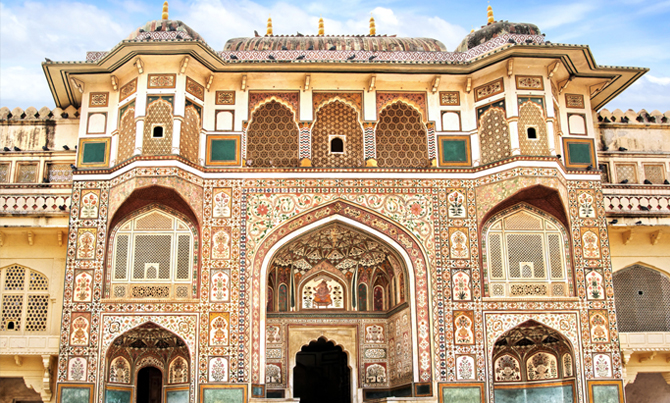
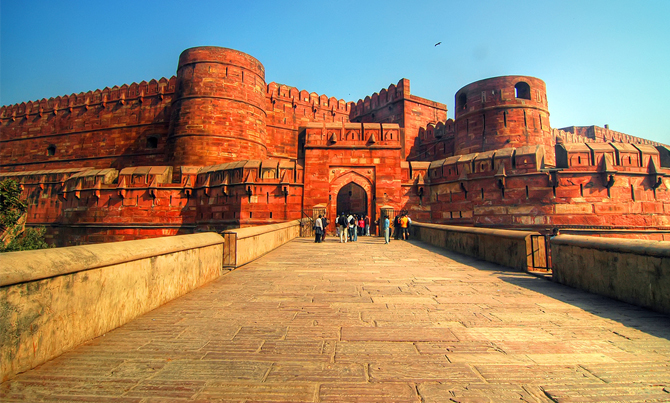
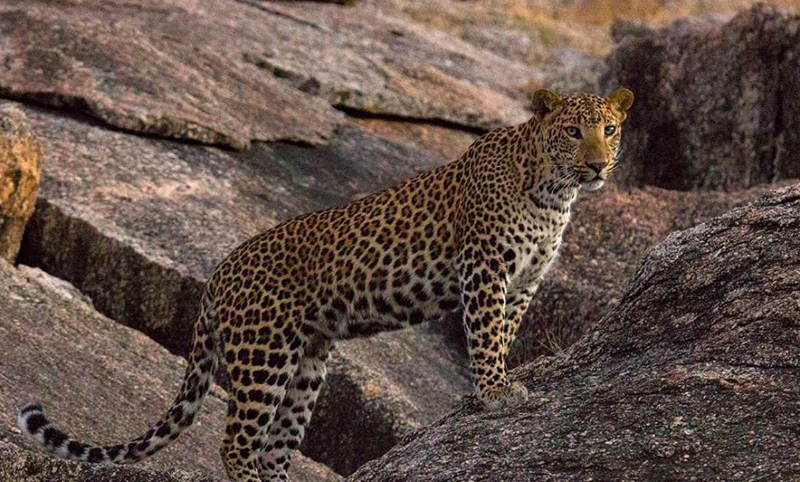
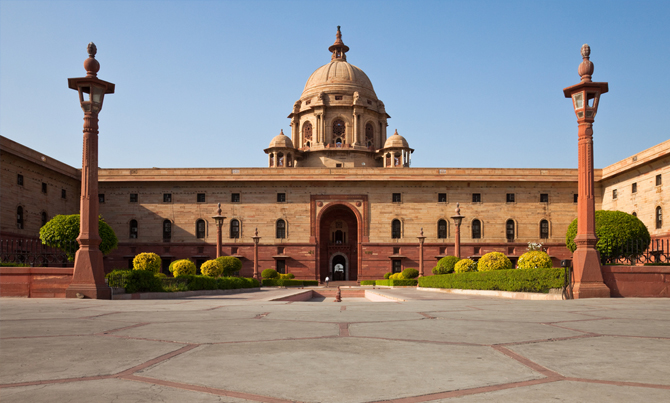
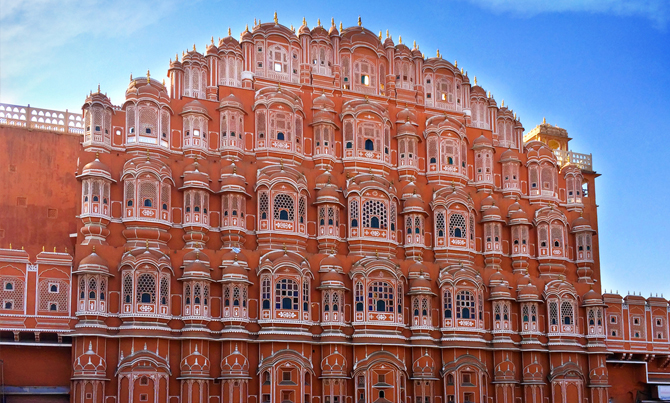
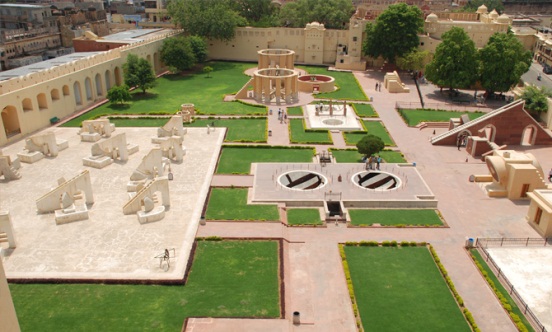
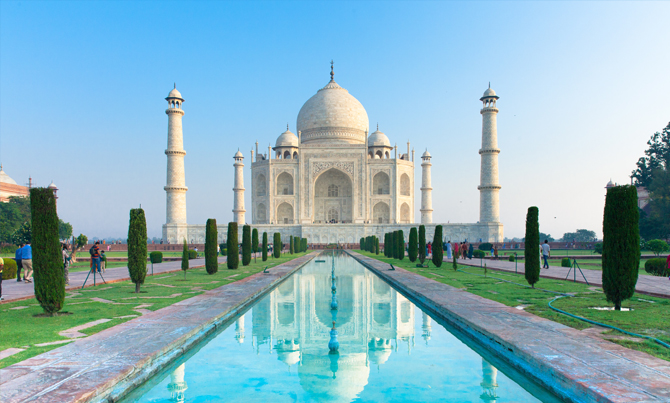
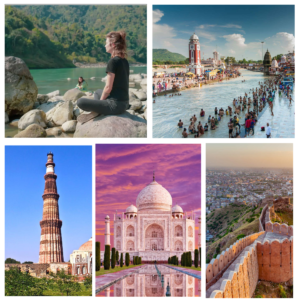

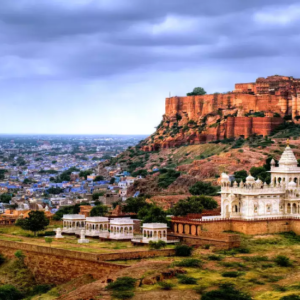
Reviews
There are no reviews yet.